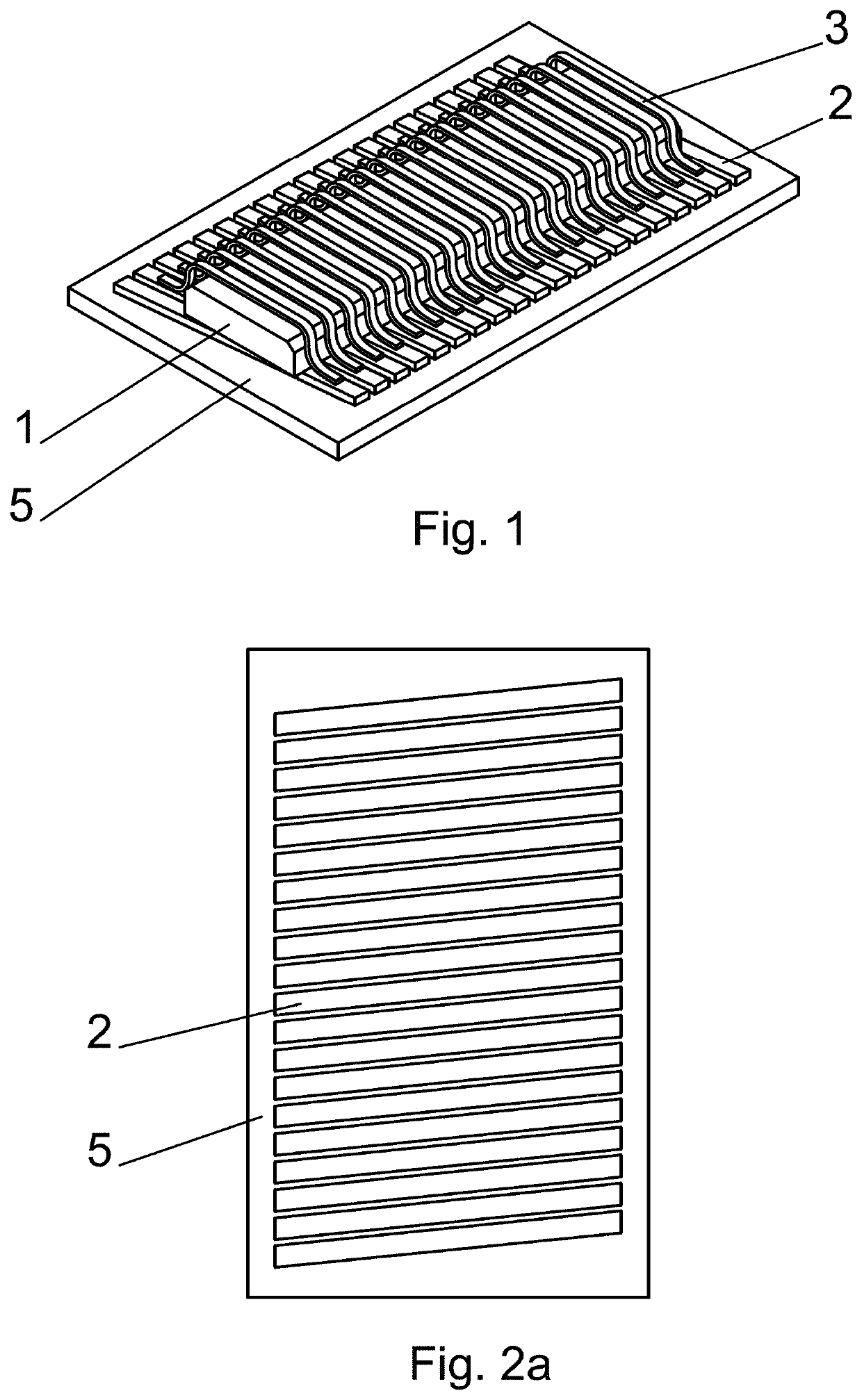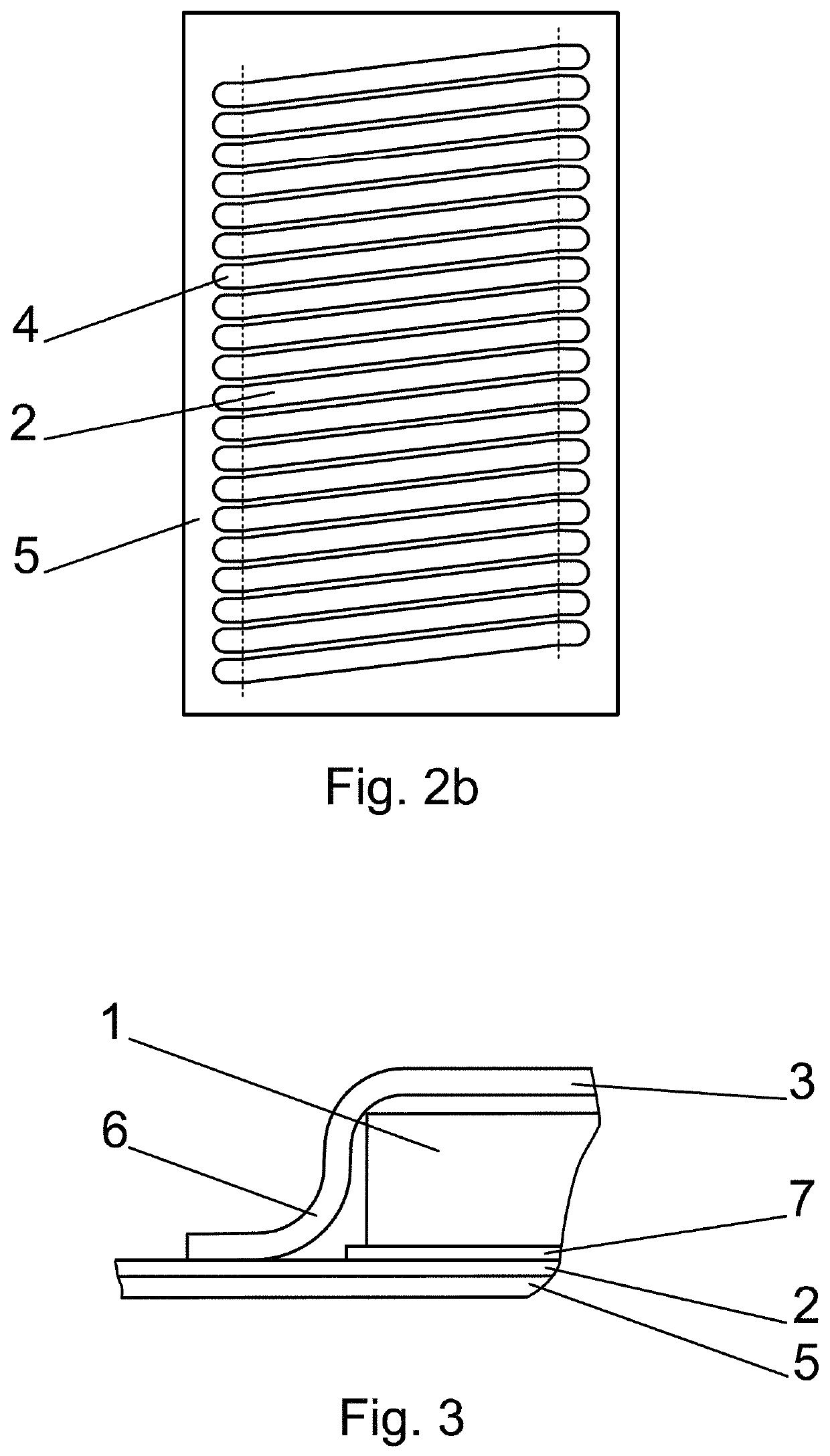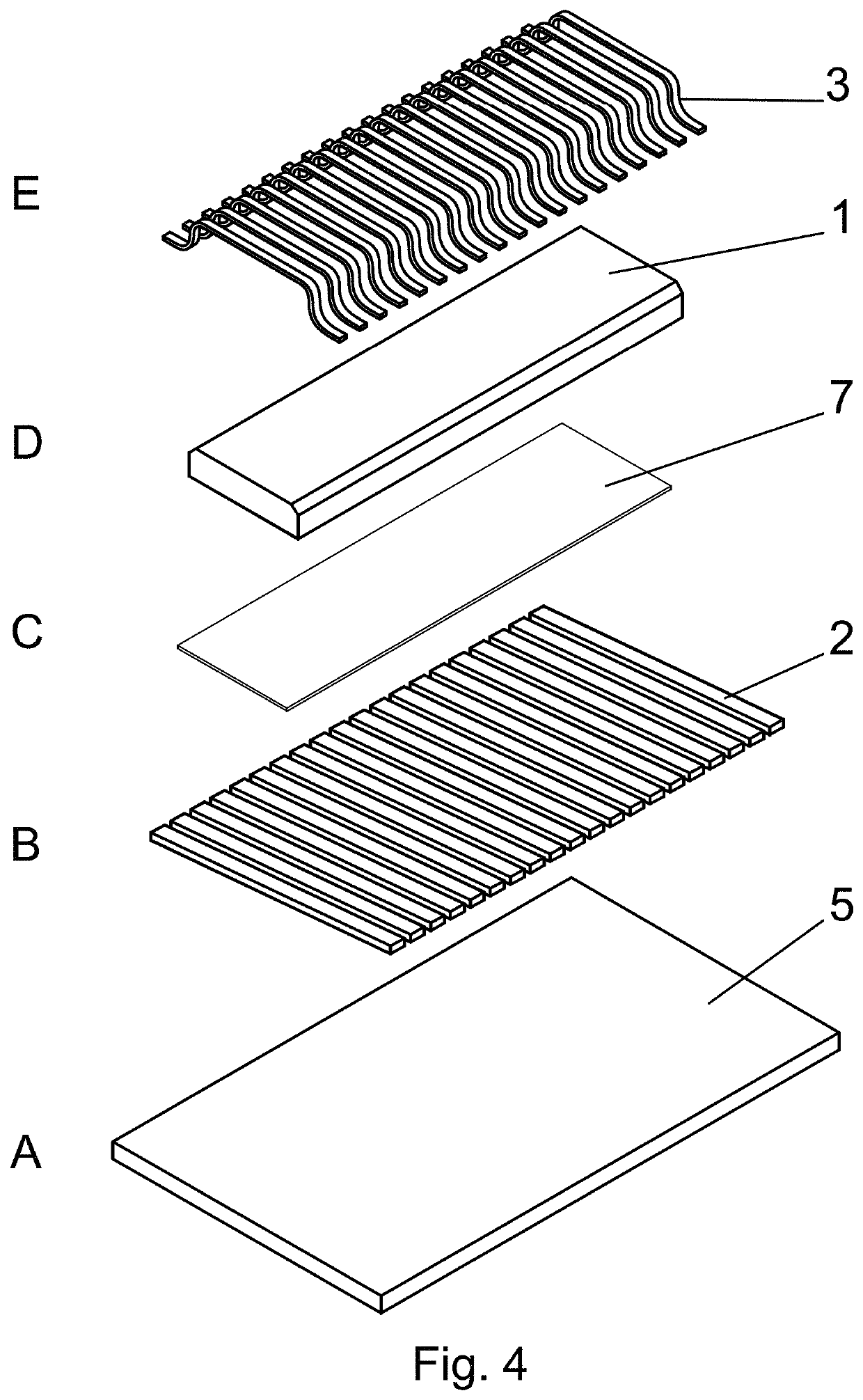Antenna with core, mainly miniature RFID and/or NFC antenna, and method of its production
a technology of rfid and/or nfc antennas, which is applied in the direction of antennas, instruments, antenna details, etc., can solve the problems of low mechanical resilience of the conductive loops during further mounting of the antenna into the circuit, prone to snapping, and worsening the emitting characteristics of the antenna, so as to achieve reliable connection
- Summary
- Abstract
- Description
- Claims
- Application Information
AI Technical Summary
Benefits of technology
Problems solved by technology
Method used
Image
Examples
example 1
[0055]In this example according to FIGS. 1 to 4, 6, 9, 13 and 16 the antenna is produced as an independent component designed for subsequent mounting on the PCB. The antenna has a ferrite core 1 with flat rectangular cross-section. The core 1 is 9 mm long and its rectangular cross-section has dimensions 2.4 mm×0.3 mm.
[0056]The substrate 5 is a non-conductive pad on which the layer with a group of conductive strips 2 is pressed. The conductive strips 2 in this example are parallel; the antenna has a constant angle of the pitch of all threads. Each conductive strip 2 is independent; it is not connected within the substrate 5 with the neighboring conductive strip 2.
[0057]The core 1 is placed on the substrate 5 in such a way that it is co-axial with the longitudinal axis of the flat element which is formed by a group of the conductive strips 2. The axis of the core 1 creates and angle of approximately 80° with the conductive strips 2.
[0058]After the placement of the core 1 on the substr...
example 2
[0064]In this example according to FIGS. 1 to 3, 5, 7 and 9 the antenna is produced directly on the PCB of the microSD card. The conductive strips 2 are produced on the PCB. Bonding is used during the mounting of the chips on the PCB; this bonding at the same time produced a connection of the opposite ends of the conductive strips 2 in the same way as in example 1. After gradual creation of all bonding connections of the wires 3, the core 1 is inserted into the created channel between the wires 3 and the conductive strips 2.
[0065]The conductive strips 2 in the example are 0.256 mm wide and from both sides of the core they overhang in length of 0.44 mm. The core 1 has groundplan dimensions 8.9×2.3 mm. The thickness of the core 1 is 0.291 mm.
example 3
[0066]In this example of realization according to FIG. 8 nine wires 3 are used for a connection of a single thread; the wires 3 have circular cross-section and connect the opposing connecting surfaces 4 of two neighboring conductive strips 2. Individual bonds (connecting points) are distributed chequerwise on a connecting surface 4; that is, they are distributed in such a way that the wires 3 can lead above the core 1 tightly close to each other, and at the same time that a small surface suffices for connection.
PUM
 Login to View More
Login to View More Abstract
Description
Claims
Application Information
 Login to View More
Login to View More - R&D
- Intellectual Property
- Life Sciences
- Materials
- Tech Scout
- Unparalleled Data Quality
- Higher Quality Content
- 60% Fewer Hallucinations
Browse by: Latest US Patents, China's latest patents, Technical Efficacy Thesaurus, Application Domain, Technology Topic, Popular Technical Reports.
© 2025 PatSnap. All rights reserved.Legal|Privacy policy|Modern Slavery Act Transparency Statement|Sitemap|About US| Contact US: help@patsnap.com



